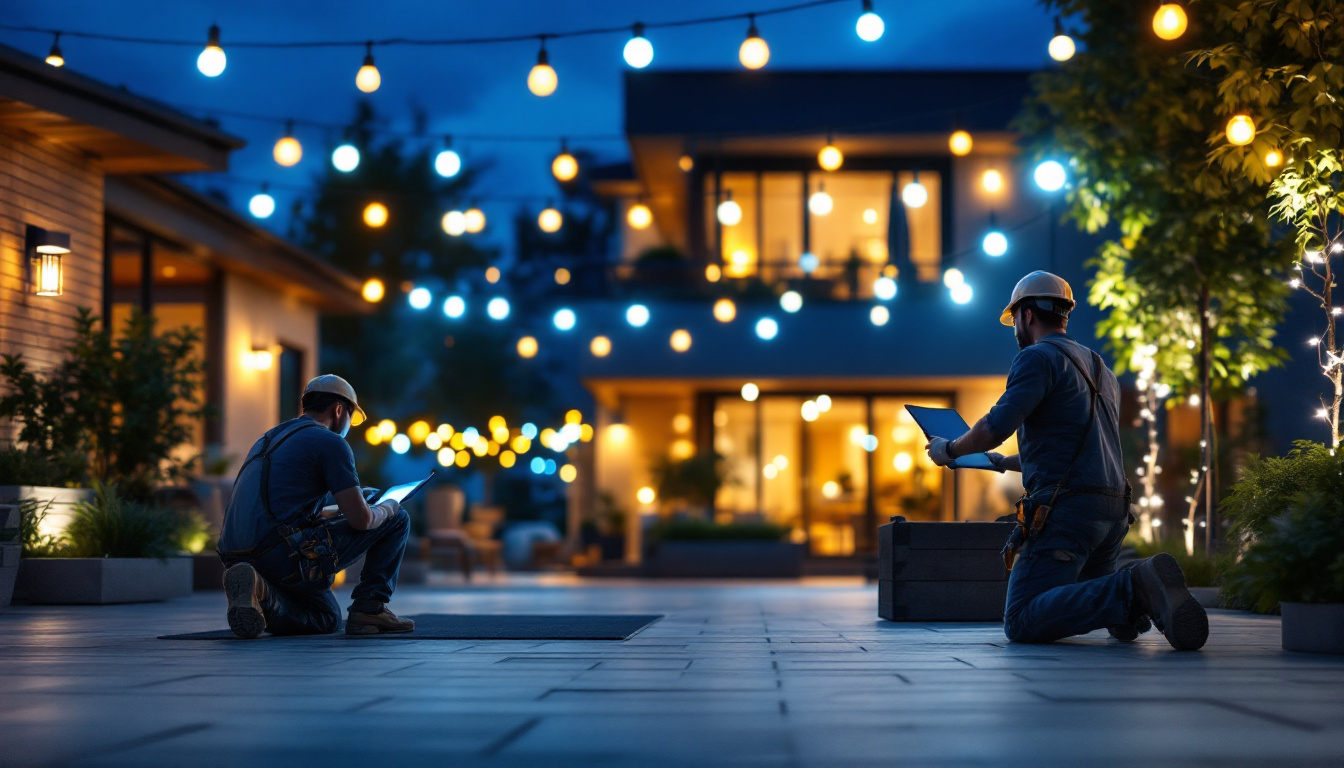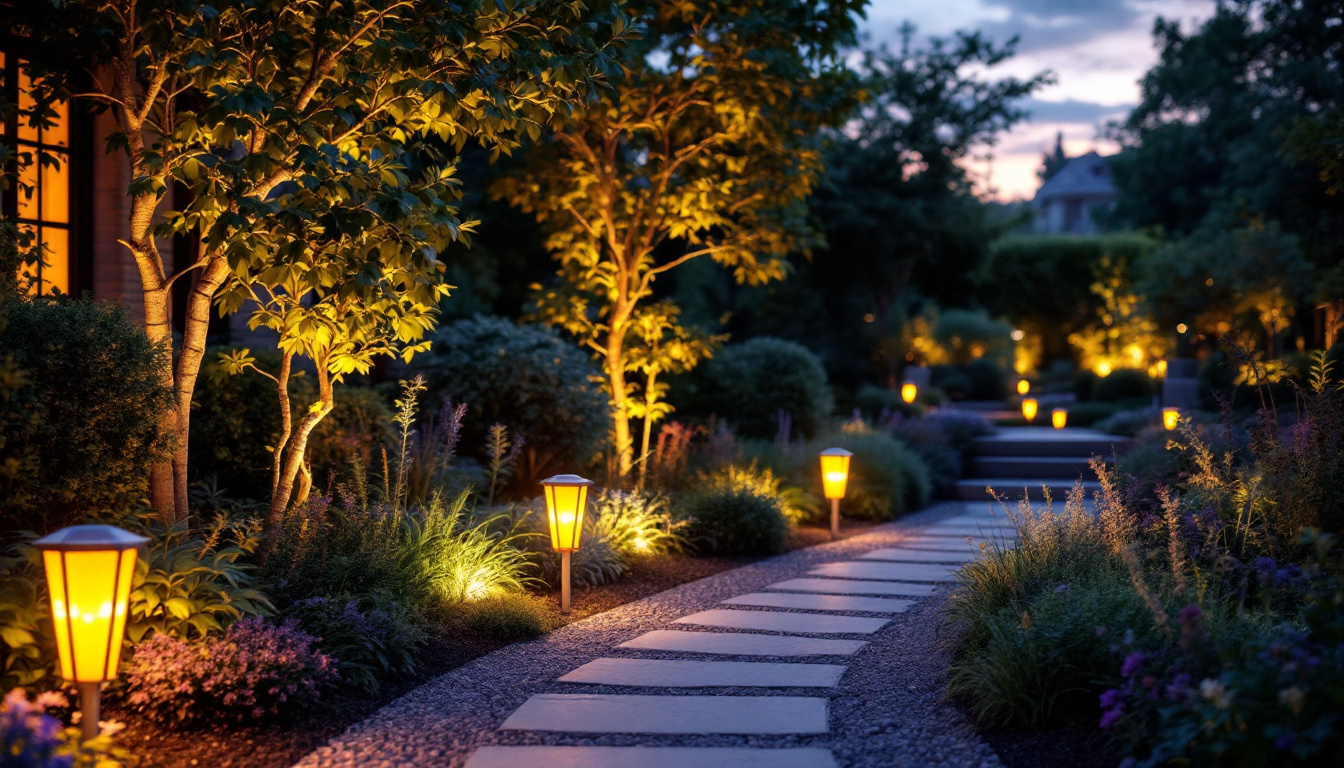
Indoor staircases often serve as a crucial transition point within a home, linking different levels while also presenting unique lighting challenges. For lighting contractors, understanding the nuances of stair lighting can enhance both safety and aesthetics. This article will delve into effective strategies and innovative hacks to elevate stair lighting designs, ensuring that they meet both functional and aesthetic needs.
Stair lighting is not just about illuminating steps; it plays a pivotal role in ensuring safety and enhancing the overall ambiance of a space. Proper lighting can prevent accidents, guide movement, and create a welcoming atmosphere. The right lighting can transform a mundane staircase into a stunning architectural feature that draws the eye and invites exploration.
Moreover, stair lighting can highlight architectural features and design elements, adding depth and interest to what might otherwise be a neglected area. For lighting contractors, recognizing the multifaceted role of stair lighting is essential in delivering comprehensive solutions to clients. By incorporating innovative lighting designs, they can create a harmonious blend of functionality and style that elevates the entire home experience.
Safety is paramount when designing lighting for stairs. Poorly lit staircases can lead to accidents, making it crucial to provide adequate illumination. The American National Standards Institute (ANSI) recommends that staircases be well-lit to prevent falls and injuries. This includes ensuring that light levels are consistent and that there are no dark spots that could cause confusion or missteps.
Incorporating features like motion sensors can enhance safety by automatically illuminating the stairs when someone approaches. This not only conserves energy but also ensures that the area is lit when it is most needed. Additionally, using lights with a warm color temperature can help create a more inviting atmosphere while still providing the necessary visibility. It’s also beneficial to consider the placement of light sources; strategically positioned lights can minimize shadows and enhance the overall safety of the staircase.
While safety is essential, the aesthetic aspect of stair lighting cannot be overlooked. A well-lit staircase can serve as a focal point in a home, showcasing design elements and creating a warm, inviting atmosphere. The interplay of light and shadow can dramatically change the perception of space, making staircases appear more spacious or intimate, depending on the desired effect.
Using different lighting techniques, such as accent lighting or wall sconces, can enhance the visual appeal of the staircase. Lighting contractors should consider how different fixtures can complement the overall design of the home while providing adequate illumination. For instance, LED strip lights can be installed along the edges of steps for a modern look, while vintage-style fixtures can add a touch of elegance to traditional settings. Furthermore, integrating dimmable options allows homeowners to adjust the brightness according to the time of day or occasion, adding versatility to the lighting scheme.
There are various lighting solutions available for indoor stairs, each offering unique benefits. Understanding these options allows lighting contractors to tailor their designs to meet specific client needs and preferences.
Recessed lighting is a popular choice for staircases due to its sleek and unobtrusive design. These fixtures can be installed in the ceiling above the stairs, providing even illumination without taking up valuable space.
When installing recessed lights, it’s important to consider the spacing and placement to avoid dark spots. A general rule of thumb is to place the fixtures about 6 to 8 feet apart, ensuring that the entire staircase is adequately lit.
Wall sconces offer a stylish way to illuminate staircases while adding character to the space. These fixtures can be mounted on the walls beside the stairs, providing both functional and decorative lighting.
Choosing sconces with adjustable brightness can enhance flexibility, allowing homeowners to set the mood according to the time of day or occasion. Additionally, wall sconces can be positioned to highlight artwork or architectural features along the staircase.
Step lights, or tread lights, are another effective solution for stair lighting. These fixtures are installed directly into the risers or treads of the stairs, providing a subtle glow that guides users safely up and down.
Step lights can be particularly beneficial in homes with children or elderly residents, as they help define each step without overwhelming the space with light. Contractors should ensure that the lights are bright enough to be effective but not so bright that they become a distraction.
Beyond traditional lighting solutions, there are several innovative hacks that contractors can employ to enhance stair lighting designs. These hacks not only improve functionality but also add a unique touch to the overall aesthetic.
Smart lighting technology has revolutionized the way we approach indoor lighting. By integrating smart bulbs and fixtures, contractors can offer clients enhanced control over their stair lighting.
Features such as remote control, scheduling, and dimming capabilities allow homeowners to customize their lighting experience. For example, lights can be programmed to turn on automatically at dusk or when motion is detected, providing convenience and energy efficiency.
The color temperature of lighting can significantly impact the mood and functionality of a space. For staircases, a warm white light (around 2700K to 3000K) is often preferred, as it creates a cozy and inviting atmosphere.
However, incorporating cooler tones (around 4000K) can enhance visibility and create a more modern feel. Contractors should discuss color temperature options with clients to determine the best fit for their home’s design and personal preferences.
Layered lighting involves combining different types of lighting to create a more dynamic and visually appealing environment. For staircases, this can mean integrating ambient, task, and accent lighting.
For example, ambient lighting can be provided by recessed fixtures, while wall sconces offer accent lighting to highlight architectural features. Step lights can serve as task lighting, ensuring that each step is clearly visible. This approach not only enhances safety but also adds depth and dimension to the staircase.
When designing lighting for stairs, several key considerations should be taken into account. These factors can influence the effectiveness and aesthetic appeal of the lighting solution.
The style and design of light fixtures should complement the overall decor of the home. For modern homes, sleek and minimalist fixtures may be appropriate, while traditional homes might benefit from more ornate designs.
Contractors should also consider the materials used in the fixtures, as these can impact both durability and appearance. For instance, metal fixtures may offer a contemporary look, while wood or glass can evoke a more classic feel.
The height and placement of lighting fixtures are crucial for ensuring effective illumination. For wall sconces, the general guideline is to install them at eye level, typically around 60 to 66 inches from the floor. This height ensures that the light is directed downward, illuminating the steps without creating glare.
For recessed lighting, the placement should be carefully calculated to avoid shadows. Aiming for a staggered pattern can help ensure even coverage across the staircase.
In today’s eco-conscious world, energy efficiency is a significant consideration for homeowners. LED lighting is an excellent choice for stair lighting, as it consumes less energy and has a longer lifespan compared to traditional incandescent bulbs.
Contractors should also educate clients about the benefits of using dimmers and smart controls, which can further enhance energy savings while providing flexibility in lighting levels.
Even experienced lighting contractors can make mistakes when designing stair lighting. Recognizing these common pitfalls can help ensure that projects are successful and meet client expectations.
One of the most common mistakes in stair lighting design is inadequate illumination. Insufficient lighting can lead to safety hazards, as users may struggle to see each step clearly.
Contractors should always prioritize safety by ensuring that staircases are well-lit. This may involve using multiple light sources or adjusting the brightness of fixtures to achieve the desired level of illumination.
Another mistake is neglecting the overall design cohesion of the space. Stair lighting should complement the existing decor and architectural features of the home.
Contractors should take the time to consider how the chosen fixtures will fit within the broader design scheme. This includes considering color, material, and style to create a harmonious look.
While creativity is essential in lighting design, overcomplicating the design can lead to confusion and a cluttered appearance. Simple, elegant solutions often yield the best results.
Contractors should focus on creating a balanced design that enhances the staircase without overwhelming it. This may involve selecting a few key fixtures rather than trying to incorporate too many different elements.
Lighting for indoor stairs is a critical aspect of home design that combines safety, functionality, and aesthetics. By understanding the various lighting solutions available and employing innovative hacks, lighting contractors can create stunning staircases that enhance the overall appeal of a home.
From smart technology to layered lighting techniques, there are numerous ways to elevate stair lighting designs. By avoiding common mistakes and considering design cohesion, contractors can deliver exceptional results that meet client needs and exceed expectations.
In the ever-evolving world of lighting design, staying informed about the latest trends and technologies will ensure that contractors remain competitive and successful in their projects. With the right approach, stair lighting can transform a simple staircase into a visually striking and safe feature of any home.
Ready to take your stair lighting projects to the next level? At LumenWholesale, we provide lighting contractors with the superior, spec-grade lighting products you need to create safe, beautiful, and functional indoor staircases. Our commitment to quality and affordability means you can access a wide range of lighting solutions at wholesale prices, without the hassle of local distributor markups. Plus, with free shipping on bulk orders, you can ensure your projects shine without the extra costs. Elevate your lighting designs today and discover the best value in wholesale lighting at LumenWholesale.

Discover why light switch timers are essential tools for lighting contractors.

Discover expert tips from a seasoned lighting contractor on how to navigate the chandelier market.

Explore the advantages and drawbacks of LED outdoor lighting for contractors.

Discover how solar power can revolutionize your lighting projects and give you a competitive edge in securing more contracts.